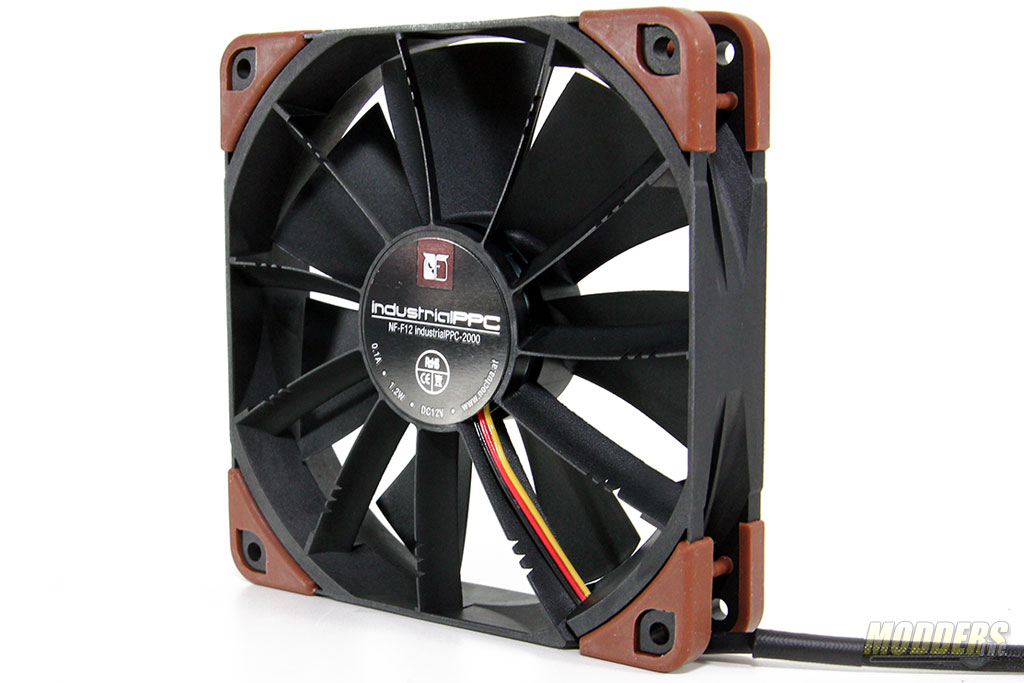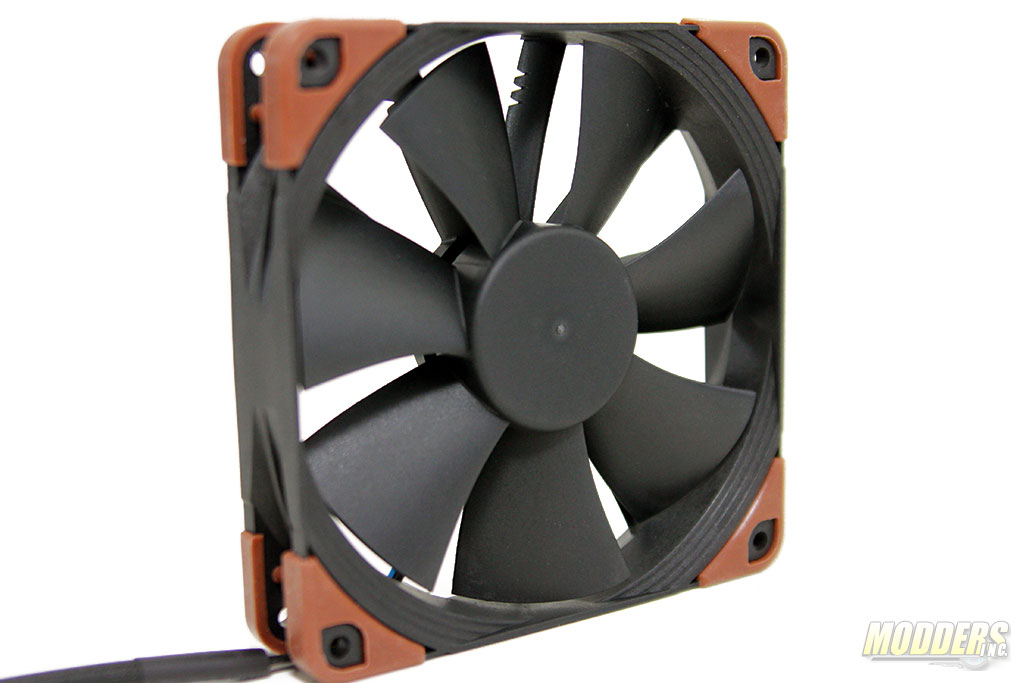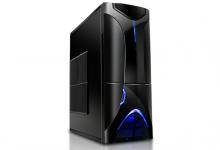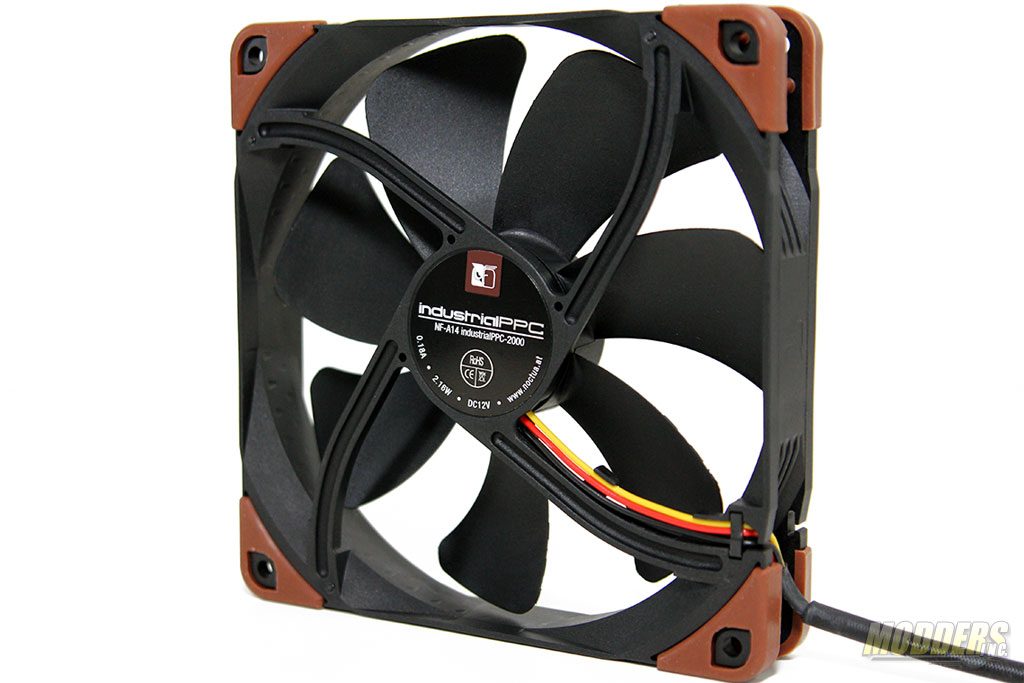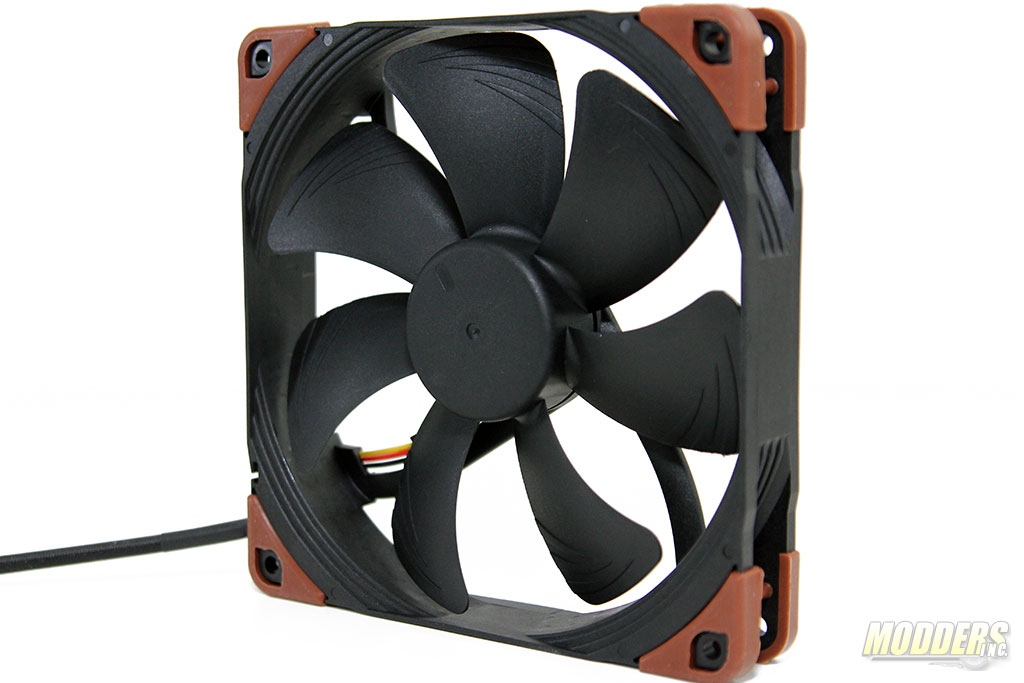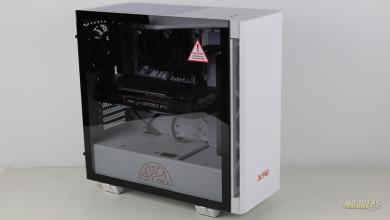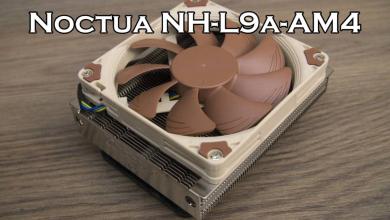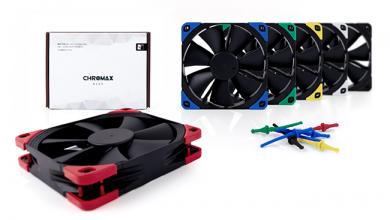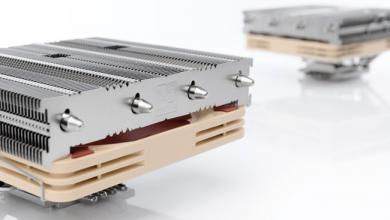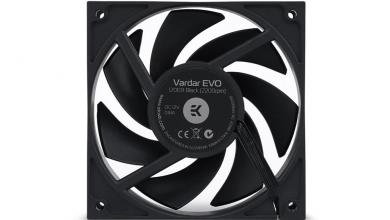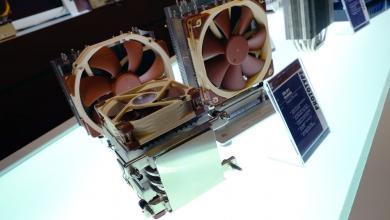Noctua IndustrialPPC Fans Review
The Noctua IndustrialPPC NF-F12 is physically a color-swap of the original NF-F12 but they are internally different. The body of the Industrial PPC fans themselves are made from Fibre-glass reinforced Polyamide (PA) so it is tougher than the Fibre-glass reinforced Polybutylene terephthalate (PBT) bodies of the regular segment and Redux Noctua fans. The motor has also been bumped from single-phase (4 poles, 4 slots) design to a three-phase (4 poles, 6 slots) resulting in higher frequency switching and evened out torque variations. The Industrial PPC fan driver ICs have also been tweaked to be much more efficient by around 10% compared to the retail Noctua fans, requiring less power to run at the same RPM output.
The NF-F12 has seven blades but they are very wide and have sharp angled corners compared to the more rounded corners of the NF-A14. The blade leading and trailing edges barely curve and look almost as if they are straight edges at first glance. Unlike the NF-A14, the blades do not have suction-side flow-acceleration channels but the Advanced Acoustic Optimization frame design is present. Noctua dubs the NF-F12 as a “focused flow” fan and it makes use of eleven stator guide vanes with varying angles (from 31 to 37 degrees). These vanes have vortex-control notches similar to some Noctua fan impeller blades for better acoustic profile. The focused flow design also makes them efficient as radiator fans hence Noctua bundles the NF-F12 in their 120mm heatsinks.
The NF-A14 design utilizes seven wide blades as well with curved corners unlike their older Noctua NF-P14 design. There are only four struts compared to the focus flow NF-F12 and these struts are straight toward the centre but curve once it approaches the edges.
The AAO frame comprising of the stepped inlet design, inner surface microstructures and integrated vibration pads alleviate noise problems that may arise or at least keep it as low as possible relative to the airflow produced. The tips of the blades have flow acceleration channels in the intake side for speeding up airflow on the outer edges which reduces vortex noise related to flow separation.
